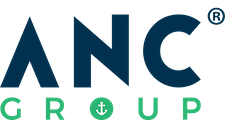Capital Allowance (CA)
When it comes to tax computation, we know that capital expenditure is not deductible for tax. Thus, depreciation of an asset is never a tax-deductible item.
The purpose of capital allowance is to give relief for wear and tear of fixed assets, and it is granted in place of depreciation that used to reduce the tax payable.
A notable point is capital allowance is only applicable to business, not individual. To qualify, the expenditure must be capital in nature and used for business purposes.
Calculation of Capital Allowance
Capital allowances consist of an initial allowance (IA) and annual allowance (AA).
Initial allowance
IA is fixed at the rate of 20% based on the original cost of the asset at the time when the capital expenditure is incurred.
Annual allowance
Annual allowance is a flat rate given every year based on the original cost of the asset. The annual allowance is given for each year until the capital expenditure has been fully written off.
Annual allowance rates vary according to the type of assets. The general rate for:
- Motor vehicle is 20%
- Plant and Machinery is 14%
- Other assets like furniture and fittings, and office equipment is 10%
Special rate of capital allowance
A special rate may be granted by the Director of General for claiming capital allowance of the qualifying capital expenditure incurred. For instance,
- Assets that with life span less than 2 years is deductible on a replacement basis;
- Accelerated capital allowances of 100% are given to small value asset not exceeding RM2,000 per asset.
- Accelerated capital allowances given to Information, communication and technology (ICT) assets, including computer and software at an annual allowance rate of 20%, only for specific years of assessments.
Disposal of assets
In the case where a fixed asset is sold, scrapped or disposed of, a balancing allowance or balancing charge will be calculated. For an asset that disposed of within 2 years, any capital allowances claimed will be clawed back by way of balancing charge.
Capital Allowance of Motor Vehicle
The rate for Initial Allowance and Annual Allowance is 20% respectively.
Motor vehicle will be classified into 2 categories:-
- Commercial car such as van, lorry and bus
- Passenger car/motor car
- The Qualifying Expenditure (QE) for a motor car or passenger car is the cash price of the vehicle including basic accessories and registration fee which is required by the Road Transport Department (RTD), Malaysia. Basic accessories are referred to those general accessories offered by all motor vehicle dealers. Optional accessories or special accessories are not qualify for claiming capital allowance.
- Apart from that, expenditure such as road tax, insurance, and hire purchase interest also do not qualify for claiming capital allowance as these expenditures are recurring expenses that are allowable under s.33 of the Income Tax Act 1967 (the Act); and reserve price for vehicle registration number including number tendered and service fee are private expenses which is prohibited under s.39 of the Act.
The qualifying expenditure for a private motor vehicle may be restricted. We can simplify it out by segregated into 4 categories.
- For Used Motor Vehicle – the QE is restricted to RM 50,000
- New Motor Vehicle – Total Cost not exceeding RM 100,000, can claim full up to cost
- New Motor Vehicle – Total Cost exceeds RM 100,000 but does not exceed RM 150,000, can claim QE for a maximum of RM 100,000
- New Motor Vehicle – Total Cost exceeding RM 150,000, can claim up to a maximum of RM 50,000
Do note that any person driving the private motor vehicle acquired under business will subject to Benefit in Kind, meaning this benefit of driving company’s car is subject to individual income tax under individual level. Business should conduct a cost and benefit analysis to make the most of the tax and operational opportunities available to your company.
Capital Allowance for Hire Purchase Asset
Hire purchase (HP) is a system of acquiring an asset which involves 3 parties: –
- 1st: Dealer (Seller)
- 2nd: Owner (Bank)
- 3rd: Hirer (Purchaser)
Under the conventional HP financing, Hirer will purchase the asset on behalf of the Owner. The HP agreement would commence once the Owner has paid the Dealer and Hirer has taken possession of the asset.
For the purpose of capital allowance, the legal ownership belongs to the Owner (bank) and the Hirer is the beneficial owner. The ownership of the asset remains with the Owner (bank) until the Hirer has fully settled the HP installment.
The installment payments are made up of:-
- Capital portion (deposit and principal repayment)
- Revenue portion (HP interest).
Only the capital portion is QE, eligible for capital allowance. While the revenue portion will claim a deduction against the business income under s.33 of the Act.
QE for an HP asset refers to the capital expenditure actually incurred by the Hirer. Therefore, capital allowance is computed based on capital instalment payments that have been made for the year of assessment.
Capital Allowance for Leasing Asset
A lease is a contract where a party is the owner (lessor) of an asset leased the asset to the lessee at a consideration (rental), either fixed or variable, for a certain period, and at the end of such period, the asset, subject to the embedded options of the lease will either be returned to the lessor or sell to the lessee at an agreed price.
In accounting standards, lease can be categorized into a finance lease or operating lease.
Lessor claims the capital allowance for lease asset
In a lease transaction, the lessor is both the legal and beneficial owner as the lessor has acquired the asset to be used in his leasing business by lease out the asset to the lessee and generate a return in a form of rental. As such, the lessor can claim capital allowance on the leased asset and lessee will claim the rental expenses.
Lessee claims the capital allowance for lease asset
Occasionally, the capital allowance will be claimed by the Lessee and not the Lessor, provided that a lease arrangement shall be deemed to be an outright sales agreement as stated under Regulation 4 of the Income Tax Leasing Regulation 1986. In this case, only lessee can claim capital allowance in respect of the asset. Necessary adjustments would be made to avoid both the lessor and the lessee claiming capital allowance in respect of the same asset. Capital allowance would be given to the lessee based on the cost price of the asset and not based on the amount of instalment payments made, unless the lease agreement has salient characteristics that stated otherwise.
Capital Allowance for Industrial Building
The qualifying expenditure for purposes of industrial building allowance (IBA) is the cost of construction of building or structure which are used as an industrial building. In the case of a purchased building, the qualifying expenditure is the purchase price of the building only. If the total purchase cost is including the land, the cost must be identified separately.
The Inland Revenue Board has issued public ruling No 3/2018 to explain the tax treatment about qualifying building expenditure (QBE) and the computation of IBA. The cost of construction which will qualify for IBA includes the cost of clearing the old site including the demolition of any old structure provided the new building is situated precisely on the same site occupied by the old building. Except where the previous structure being demolished was an industrial building. The meaning of cost of constructing additions, renovations and alteration is also elaborated in the Public Ruling.
Not all the building is regarded as an industrial building. An industrial building includes a building that used as:-
- A factory;
- Warehouse**;
- A dock, wharf, jetty
- Farm, Mine
- Airport**
- A hotel registered with the Ministry of Tourism**
- Water and electricity or telecommunication facilities supply sites
- Approved research and approved training**
- A private hospital includes maternity home and nursing home**
- Old folks care center approved by the Department of Social welfare
- School and educational institution
- Industrial, technical or vocational training**
- Motor racing Circuit**
- Living accommodation for employee employed by manufacturing, hotel or tourism business**
The general rates of IBA, whether constructed or purchased is 10% for IA and 3% for AA.
Same as capital allowances, a special rate may be granted by the Director of General for claiming IBA of the QBE incurred.
Conditions to Claim Capital Allowance
The conditions to claim CA on an asset
- Incurred: There must be a qualifying expenditure incurred, meaning you have paid for it;
- Ownership: you are the owner of the asset at the end of the basis period;
- Used: that asset was used for the business purposes.
Ownership is referred to either legal or beneficial ownership. The person who owns an asset can be the legal or beneficial owner or both.
Legal ownership
The legal owner is the person whose name is registered or documented as proof of ownership.
- For landed assets is refer to the person whose name is on the land grant.
- For the motor vehicle is refer to the person whose name is on the vehicle card.
Beneficial owner
A beneficial owner is the person who has incurred the QE and payment for the asset that can be proved in the books of accounts with supporting documents such as invoices, vouchers and receipts.
Beneficial owner is the one who can claim capital allowance on the use of asset even though he is not a legal owner of the asset.
If you would like to know more about capital allowance, feel free to reach us at 011-1217 8183.




